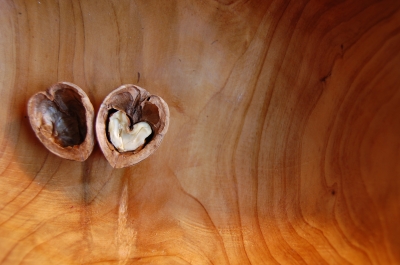Trans Fats No Longer Recognized as Safe
 Trans fats are produced during the process of hydrogenation. Partially hydrogenated oils are used in food production to enhance flavor, texture, and shelf life of many processed foods. Partially hydrogenated oils have been used in food production for quite some time. It was in 1911 when Protor & Gamble began using partially hydrogenated oils in the shortening Crisco. The hydrogenation process, which results in trans fats, made it possible to stabilize oil.
Trans fats are produced during the process of hydrogenation. Partially hydrogenated oils are used in food production to enhance flavor, texture, and shelf life of many processed foods. Partially hydrogenated oils have been used in food production for quite some time. It was in 1911 when Protor & Gamble began using partially hydrogenated oils in the shortening Crisco. The hydrogenation process, which results in trans fats, made it possible to stabilize oil.
The Health Concerns
Unfortunately, trans fats come with many health concerns. They increase LDL cholesterol and triglyceride levels while decreasing HDL cholesterol levels. Trans fats are linked to stroke, heart disease, and diabetes.
In 2006, the Food and Drug Administration (FDA), required food manufacturers to report trans fat content on food labels. Research shows this did help Americans to reduce their trans fat intake from an average of 4.6 grams per day in 2006 to 1 gram per day on average in 2012.
Generally Recognized As Safe (GRAS)
Any substance added to food is considered a food additive and must be reviewed and approved by the FDA. This review and approval does not have to take place if the food additive is generally recognized as safe under the conditions of its intended use among qualified experts. Up until now, trans fats have been on the “Generally Recognized As Safe” list.
Recently the FDA announced that partially hydrogenated oils (i.e. the primary source of trans fats) are not “generally recognized as safe” for use in food. This preliminary determination is based on current research findings and reviews of expert scientific panels. This means the FDA has begun a 60-day comment period to collect more data, as well as determine how much time is needed for food manufacturers to eliminate the use of partially hydrogenated oils in production.
What You Can Do
You don’t need to wait for food manufactures to change their methods. You can read food labels now to eliminate trans fats from your diet.
Here are some foods that may contain trans fats:
A New Weight Loss Drug
 An FDA panel consisting of 20 experts voted 13 to 7 in favor of approving the weight loss drug Contrave, with an abstention that additional studies be conducted related to heart risks. Safety concerns were considered, but it was determined that the pros of the medication outweighed the cons. Two weight loss drugs were rejected by the FDA panel just this past October due to safety concerns.
An FDA panel consisting of 20 experts voted 13 to 7 in favor of approving the weight loss drug Contrave, with an abstention that additional studies be conducted related to heart risks. Safety concerns were considered, but it was determined that the pros of the medication outweighed the cons. Two weight loss drugs were rejected by the FDA panel just this past October due to safety concerns.
What is Contrave?
The weight loss drug Contrave is a combination of the antidepressant buproprion and the anti-addiction drug naltrexone. Some of the side effects reported by the FDA include high blood pressure, dizziness, and insomnia.
Heart Health – Eat Walnuts for Healthier Blood Vessels

A recent study found walnuts linked to improved cardiovascular health due to improved function of the endothelium (inner lining of blood vessels) in those with type II diabetes.
Not only was the walnut addition linked to improved endothelial function, but participants also experienced increased fasting serum glucose levels, reduced LDL cholesterol, and lower total cholesterol.
Back in 2004, the US Food and Drug Administration (FDA) approved a label claim for walnut packages:
“Supportive but not conclusive research shows that eating 1.5 ounces of walnuts per day, as part of a low saturated fat and low cholesterol diet, and not resulting in increased caloric intake may reduce the risk of coronary heart disease.”
One thing to keep in mind when it comes to walnuts (and nuts in general) is calories! Nuts are not low in calories, so you must watch your portion size. Going overboard can lead to weight gain and counteract the heart health benefit of adding walnuts to your daily diet. A 1.5 ounce serving of walnuts provides ~278 calories. There are approximately 20 walnut halves in a 1.5 ounce serving.
Here are a few simple ways to add walnuts to your daily diet:
- Sprinkle chopped walnuts on oatmeal or breakfast cereal
- Mix walnuts with dried fruit for a nutritious snack
- Add toasted walnuts to a salad or pasta dish
Do you eat walnuts regularly?
All the best,
Lisa Nelson RD
How to Lower Cholesterol in 8 Simple Steps
http://www.lowercholesterolwithlisa.com
Image courtesy of Aleksa D / FreeDigitalPhotos.net



